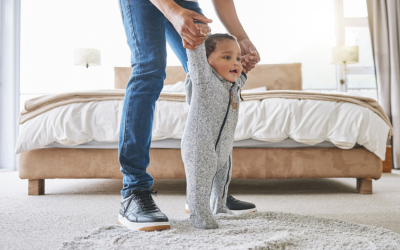Beyond Band-Aids: Overlake Expert Shares Common Childhood Injuries and How to Avoid Them
Tumbles and spills, a rite of passage for every child, can quickly turn into serious emergencies. Among the wide array of childhood mishaps, falls remain the leading cause of injury visits to emergency rooms. According to Overlake Trauma Program Manager Karen Kettner MSN, RN, falls are the number one cause of preventable injuries in children. If you have young children in the house, prevention is key to keeping them safe. This summer, take proactive steps to protect your family from falls by following these essential tips.

Furniture
Infants are more likely to fall from furniture. Babies who are left unsupervised on top of beds, changing tables and even couches, can roll off. Make sure to:
- Never leave babies alone on any furniture. This includes beds, tables, sofas, cribs with the guardrails down or changing tables.
- Choose baby products that meet safety standards.
- Use all safety straps and features.
- Before purchasing, look for safety features on high chairs, cribs and other equipment.
- Install padding on sharp corners.
Windows
Young children are curious and will explore an open window. Windows that are open just five inches pose a danger to children. Falls from windows happen most often between the ages of 2 and 5, and can lead to serious injury or death. To prevent falls from windows:
- Install window guards on all windows above the first floor.
- If you must open windows, make sure your child can't reach the open window.
- Set rules with your child about playing near windows.
- Remove beds and other furniture near windows that children can climb on.
- Don’t rely on insect screens to keep children from falling out of windows.
Stairs
Infants and toddlers don’t realize the danger of falling down stairs. Older children who run up and down the stairs can trip and injure themselves. To prevent problems:
- Remove clutter on stairs.
- Use safety gates to prevent infants and toddlers from falling down stairs.
- Don’t use accordion gates with large openings. A child can get trapped in one of these.
Floor surfaces
Rugs or mats that aren’t secure on bare floors can cause a child to slip and fall. Make sure to:
- Use slip-resistant mats. Put slip-resistant stickers in tubs.
- Put foam backing, a rubber pad, or double-sided tape under area rugs.
- Remove clutter and other hazards on floors.
Falls are an inevitable part of childhood, but many injuries can be prevented with mindful precautions. By implementing these safety measures, you can significantly reduce the risk of falls and ensure your home is safer for your children. After all, the last place you'd want to be on a beautiful summer day is an emergency room or urgent care. Remember, a little prevention goes a long way.
It's important to always be prepared in the case of an emergency. Sign up today for one of Overlake's Infant Safety & CPR classes.








